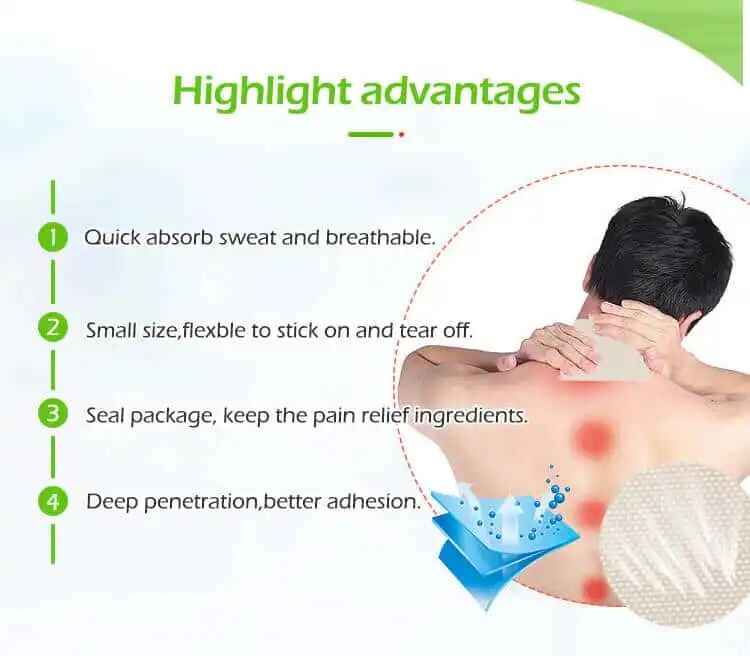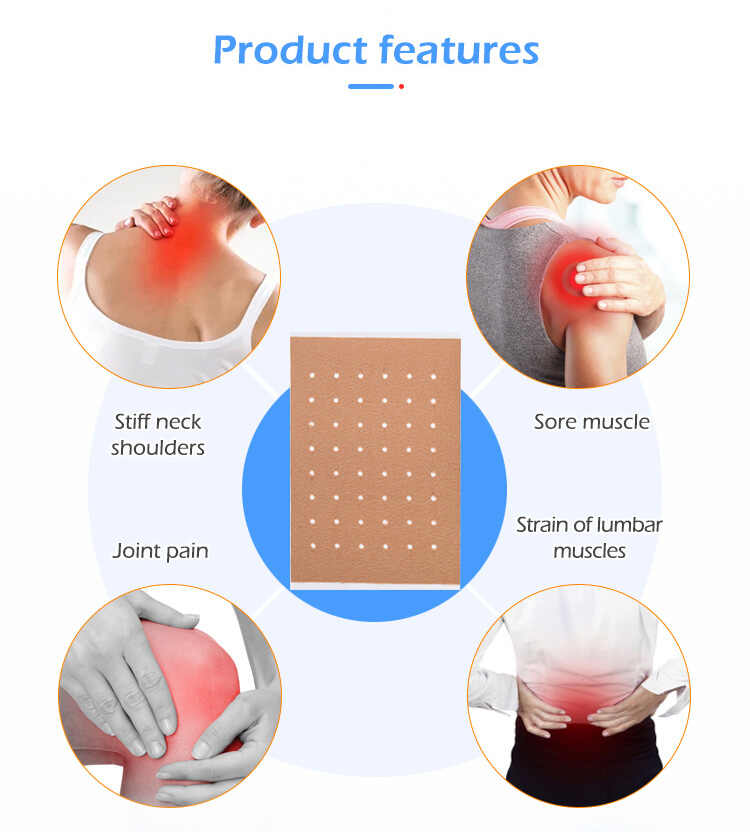The Future of Pain Relief Gel Patches OEM: Trends to Watch in 2025
As the global wellness industry rapidly evolves, the pain management segment is experiencing unprecedented innovation. Among the most promising products are pain relief gel patches, which provide targeted, non-invasive relief for millions worldwide. The role of a Pain Relief Gel Patches Manufacturer and Pain Relief Gel Patches OEM partner has become pivotal in shaping the future of this market.

In 2025, the industry is expected to witness major advancements driven by consumer demand for customization, sustainability, and technological integration. This article explores the key trends shaping the Pain Relief Gel Patches OEM landscape, explains how these innovations benefit brands, and highlights the strategic opportunities for companies collaborating with trusted Pain Relief Gel Patches Suppliers.
1. Rising Demand for Custom Pain Relief Gel Patches
One of the defining trends in 2025 is the accelerated shift towards Custom Pain Relief Gel Patches. Consumers today seek products tailored to their unique health needs, lifestyle, and preferences.
Personalized Ingredients: Customers want natural extracts, pharmaceutical-grade actives, or a hybrid combination optimized for their specific pain type (e.g., muscular, joint, nerve).
Targeted Design: Patch size, shape, adhesion strength, and wear duration are customized to enhance efficacy and comfort.
Leading Pain Relief Gel Patches Manufacturers are investing in advanced R&D to provide customizable formulations and flexible production lines. Brands leveraging Pain Relief Gel Patches OEM partnerships can meet these expectations with lower development costs and faster market entry.
2. Integration of Smart Technology in Pain Relief Patches
The future will see Pain Relief Gel Patches equipped with smart technology. This innovation aligns with the broader health-tech movement and wearable wellness devices.
Biosensors: Embedded sensors that monitor skin temperature, inflammation levels, or patch usage duration.
App Connectivity: Real-time data sharing with mobile apps for personalized pain management tracking.
Controlled Release Mechanisms: Technology that adjusts the dosage or active ingredient release based on user activity or pain intensity.
Pain Relief Gel Patches OEMs capable of integrating such technologies will lead the market, offering brands a unique selling proposition through enhanced user experience.
3. Sustainability and Eco-Friendly Production
Environmental concerns are reshaping consumer behavior, and the pain relief patch industry is no exception. In 2025, sustainability will be a significant driver in OEM manufacturing strategies.
Biodegradable Materials: Adoption of plant-based adhesives and substrates reduces environmental footprint.
Eco-Friendly Packaging: Minimalist, recyclable, or compostable packaging solutions appeal to conscious consumers.
Green Manufacturing Processes: Energy-efficient production methods and waste reduction initiatives.
Private Label Pain Relief Gel Patches incorporating these features attract eco-conscious buyers and enhance brand reputation, offering an edge in competitive markets.
4. Regulatory Landscape and Quality Assurance
As the pain relief gel patch market expands, regulatory bodies are tightening requirements to ensure product safety and efficacy.
Stricter Compliance: GMP, FDA, CE, and ISO certifications are becoming mandatory in more regions.
Transparency: Brands must provide clear ingredient sourcing and manufacturing process documentation.
Post-Market Surveillance: Increased monitoring of product performance and adverse effects.
A reliable Pain Relief Gel Patches Supplier will help brands navigate this complex environment, providing compliant products and robust quality control to avoid costly recalls or legal challenges.
5. Growth of Private Label and White Label Opportunities
The demand for Private Label Pain Relief Gel Patches continues to rise, driven by brands seeking rapid expansion without heavy R&D investments.
Faster Time-to-Market: OEMs provide ready-made formulations that can be customized with branding.
Cost-Effective Solutions: Reduces overhead, manufacturing, and regulatory costs.
Brand Ownership: Companies maintain full control over marketing and customer relations while outsourcing production.
This trend benefits startups and established businesses alike, enabling them to capitalize on the growing pain relief patch market.
6. Expansion in Emerging Markets
The global reach of pain relief gel patches is expanding beyond traditional Western markets.
Asia-Pacific and Latin America: Increasing healthcare awareness and disposable incomes boost demand.
Local OEM Partnerships: Collaborations with regional Pain Relief Gel Patches Manufacturers ensure market-specific formulations and regulatory compliance.
Affordable, Effective Solutions: Tailored to meet the price sensitivity and preferences of emerging consumers.
Brands that leverage global Pain Relief Gel Patches OEM networks can tap into these growth opportunities with ease.
7. Focus on Herbal and Natural Formulations
Natural health products continue to dominate consumer preferences, driving the development of herbal pain relief gel patches.
Herbal Actives: Ingredients like turmeric, arnica, menthol, camphor, and CBD are increasingly popular.
Clean Label Products: Transparency in sourcing and avoiding synthetic chemicals appeal to health-conscious buyers.
Synergistic Blends: Combining traditional herbal remedies with modern pharmaceuticals for enhanced efficacy.
The ability of a Pain Relief Gel Patches Manufacturer to innovate in this segment provides a competitive advantage in 2025’s wellness-driven market.
8. Advanced Formulation and Delivery Systems
Innovative formulations that improve active ingredient absorption and user comfort are gaining traction.
Microneedle Technology: Minimally invasive delivery increases absorption and reduces irritation.
Hydrogel and Bioadhesive Enhancements: Improve patch flexibility and prolonged adhesion.
Multi-Target Formulas: Address different types of pain simultaneously (e.g., anti-inflammatory + analgesic).
OEM manufacturers that pioneer these technologies enable brands to market next-generation products with superior benefits.
9. Strategic Role of OEMs in Brand Growth
The role of Pain Relief Gel Patches OEM is evolving from mere production to strategic partnership.
OEMs now offer end-to-end services, from concept development to post-launch support.
Collaborative R&D allows brands to innovate faster and with higher confidence.
Agile supply chains ensure timely delivery despite market fluctuations.
Brands aligning with versatile and forward-thinking Pain Relief Gel Patches Suppliers position themselves for sustained growth and market leadership.
10. Conclusion: Embracing Innovation to Lead in 2025
The future of Pain Relief Gel Patches OEM is bright and full of opportunity. By understanding and embracing trends such as customization, smart technology integration, sustainability, and regulatory rigor, brands can build lasting connections with consumers and outperform competitors.
Choosing the right Pain Relief Gel Patches Manufacturer or Pain Relief Gel Patches Supplier that invests in innovation and quality is essential. This partnership will empower your brand to deliver Custom Pain Relief Gel Patches and Private Label Pain Relief Gel Patches that meet the evolving demands of 2025 and beyond.
Related Questions and Answers
Q1: What is driving the demand for custom pain relief gel patches?
A: Increasing consumer desire for personalized, effective, and comfortable pain management solutions drives customization.
Q2: How will smart technology impact pain relief gel patches?
A: Smart sensors and app connectivity will allow real-time monitoring and personalized treatment, enhancing user experience.
Q3: Why is sustainability important for pain relief gel patch OEMs?
A: Eco-friendly materials and packaging meet consumer demand for responsible products and reduce environmental impact.
Q4: What certifications should I look for in a pain relief gel patches manufacturer?
A: Look for GMP, ISO, FDA, and CE certifications to ensure product quality and regulatory compliance.
Q5: How can private label pain relief gel patches benefit my brand?
A: Private labeling allows quick market entry with proven formulas while maintaining full branding control.
Q6: Are herbal formulations popular in pain relief patches?
A: Yes, herbal and natural ingredients like CBD and arnica are increasingly favored by health-conscious consumers.






